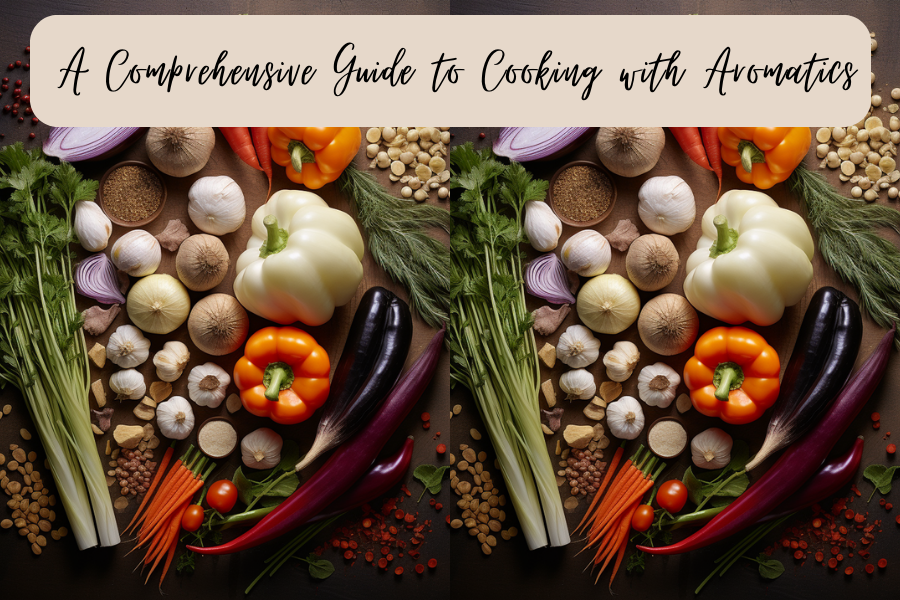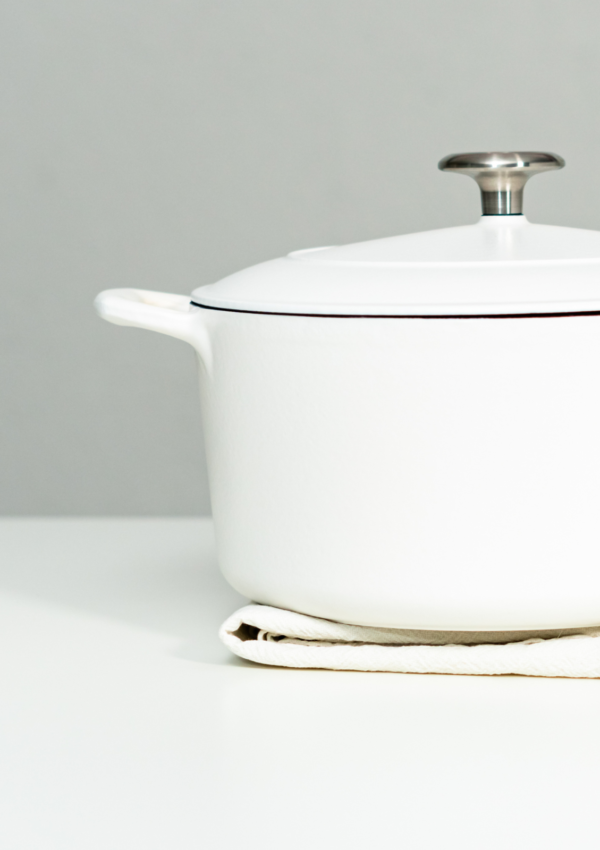Aromatics set the stage for countless recipes. Understanding how to pair and work with aromatics is essential to mastering complex dishes! Today, we are going to build your foundational understanding of flavor through the proper use of aromatics.

Cooking with aromatics is an art that transforms ordinary dishes into culinary masterpieces. Without aromatics, we would miss out on the depth and complexity of countless recipes. Understanding the foundation of aromatics is essential to anyone looking to improve their culinary knowledge and skillset!
In this comprehensive guide, we’ll delve into the definition of aromatics, provide an extensive list and description of popular choices, offer tips on cooking with aromatics, and explore the art of pairing these flavorful ingredients.
Since you’re here, I’d like to quickly remind you that I have an entire line of salt & sugar-free seasonings that will change your cooking game. Check out the entire line here!
This post is all about aromatics.
Aromatics in Cooking
“Aromatics” refers to a group of ingredients that are used to enhance the flavor and aroma of a dish. They are often the foundation of many recipes and are used to build depth and complexity in flavor. They typically consist of vegetables, herbs, and spices that are sautéed or simmered to release their flavors into a dish.
These ingredients contribute essential oils and volatile compounds, releasing enticing scents and tastes when cooked. The magic of aromatics lies in their ability to create a flavor base that sets the stage for the entire culinary journey.
Aromatics List
Onions
A fundamental aromatic in many cuisines with both sweet and savory notes. They add a rich depth to dishes when sautéed or caramelized. There are a few different types of onion, so let’s dive into what each onion provides to help you choose the right onion for your dish:
- White onion – has a sweeter, milder flavor. Can use raw in salsa or cooked in a stir fry.
- Red onion – has the mildest flavor, most often used raw but also great in guacamole and perfect for pickling.
- Yellow onion – has the deepest flavor, best used in cooking (especially in soups and sauces).
- Sweet onion – has a lovely sweeter flavor and is great for frying or roasting.
- Shallot – has a delicate, subtle flavor. Great in dressings or as a garnish.
Garlic
Garlic offers a pungent and robust flavor, enriching a wide range of dishes. Whether minced, crushed, or sliced, its aromatic qualities are essential.
Celery
Celery provides a subtle earthy flavor and is a key component in stocks, soups, and stews. Both the stalks and leaves can be utilized.
Carrots
Carrots contribute a mild sweetness and earthiness. They are often used in conjunction with other aromatics to build a well-rounded flavor profile.
Bell Peppers
Bell peppers, available in various colors, add a sweet and slightly fruity flavor. Their vibrant hues contribute both visual appeal and taste.
Leeks
Leeks have a milder, sweeter taste compared to onions. They are frequently employed in soups and stews, offering a delicate onion-like essence.
Ginger
Ginger brings a warm and spicy kick to dishes, commonly found in Asian and Indian cuisines. Its versatility allows for use in both sweet and savory recipes.
Scallions
Scallions, or green onions, provide a mild onion flavor and a fresh, crisp texture. They are often used as a finishing touch or garnish. Scallions also taste great grilled or roasted.
Herbs
Herbs such as thyme, rosemary, and bay leaves impart distinct aromatic qualities. Thyme and rosemary offer earthy and pine-like notes, while bay leaves contribute a subtle, herbal aroma.
Spices
Peppercorns add heat and depth, while cinnamon offers warmth and sweetness. Both spices play a crucial role in building complex flavor profiles.
Tips on Cooking with Aromatics
Sweating or Softening
Before adding other ingredients, sauté aromatics in oil or butter to release their flavors. This process, known as sweating or softening, forms the flavor base for the entire dish.
Timing Matters
Add aromatics early in the cooking process to allow their flavors to meld. Tougher veggies like carrots and onions typically go first, followed by more delicate ingredients like celery and garlic.
Balance Flavors
Experiment with the quantity of aromatics to achieve the desired balance. A little goes a long way, so start with small amounts and adjust based on taste.
Fresh vs. Dried
While fresh aromatics provide vibrant flavors, dried counterparts can be convenient and have a more concentrated taste. Be mindful of the intensity when substituting one for the other. A common rule of thumb is to substitute one teaspoon of dried herbs for one tablespoon of fresh herbs.
Layering Aromatics
For complex dishes, consider layering aromatics by adding them at different stages of cooking. This builds depth and complexity in the overall flavor profile.
Pairing Aromatics
Classic Combinations
Combine onions, garlic, and celery as a base for many savory dishes. This trio, known as mirepoix, forms the backbone of flavor in French cuisine. The Cajuns have their version called The Holy Trinity, which is a combination of onion, celery, and bell pepper.
- MIREPOIX FORMULA: 2 parts onions + 1 part carrots + 1 part celery
- THE HOLY TRINITY FORMULA: 3 parts onions + 2 parts celery + 1 part green bell pepper
Ethnic Influences
Explore aromatic combinations specific to various cuisines. For example, ginger, garlic, and scallions are central to many Asian recipes, while garlic and olive oil define Mediterranean flavors.
Balancing Sweet and Savory
Experiment with pairings that balance sweet and savory aromatics. For instance, combining carrots and onions can create a harmonious interplay of flavors.
Herb and Spice Harmony
Match herbs and spices that complement each other. Thyme and rosemary work well together, and cinnamon can enhance the warmth of ginger in certain dishes.
You May Also Like
If you like these tips, I have a ton of others! Check out these blog posts for all the kitchen tips & tricks:
- Reviving A Rusty Cast Iron Skillet
- Grocery Shopping On A Budget
- Meal Prep Essentials
- Meal Prep Tips
- How To Care For Cast Iron Skillet | A Comprehensive Cast Iron Guide
OR click here for the entire “In The Kitchen” Category!
Cooking with aromatics is an adventure that invites creativity and exploration in the kitchen. Understanding the nuances of each aromatic, mastering the art of balancing flavors, and discovering unique pairings can elevate your culinary skills. Whether you’re crafting a comforting stew or a vibrant stir-fry, the judicious use of aromatics will undoubtedly enhance the sensory experience of your dishes. Embrace the aromatic symphony and let your kitchen be filled with the enticing scents of culinary magic.
This post was all about aromatics.
Did you try these tips? Make sure to tag me @thespicegirlkitchen_ on Instagram or @thespicegirlkitchen on TikTok! I love seeing you CRUSH IT! I will be your ultimate hype woman!
Want to learn more about Kelsey? Click here to read her story!






